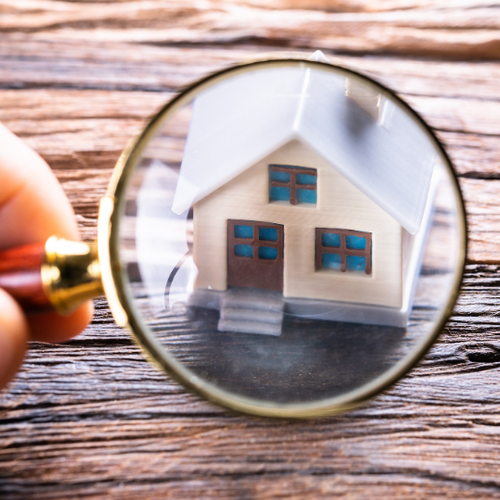Buying a home is undoubtedly one of the most significant financial and emotional commitments most people will ever make. You’re not just purchasing property—you’re making a place for yourself and your loved ones to grow, share experiences, and create lifelong memories. For many first-time buyers, the process is both exciting and nerve-racking. Even seasoned homebuyers can find themselves overwhelmed by the multitude of details to consider: finances, location, property condition, neighborhood dynamics, future resale value, and more. With so much on the line, it’s crucial to pay careful attention to potential pitfalls that could turn your dream property into a real estate nightmare.
One of the biggest mistakes any prospective homeowner can make is ignoring or overlooking the red flags that arise during the homebuying process. These warning signs are often subtle, disguised as minor inconveniences or brushed off as easy-to-fix issues. However, even “little” problems can spiral into massive expenses and complications if you’re not vigilant early on. By knowing what to look for—and by asking the right questions—you’ll give yourself the best chance at finding a home that truly fits your long-term needs without becoming a burdensome money pit.
Below, you’ll find an in-depth look at some of the most common red flags every homebuyer should be alert to. We’ll explore hidden structural problems, suspicious seller behaviors, telling signs of poor maintenance, neighborhood issues, and more. The goal is simple: ensure you don’t walk into your new home blinded by excitement, only to discover a wealth of problems lurking beneath the surface.
Foundation and Structural Issues
A home’s foundation is the very core of its stability. If it’s compromised, there is virtually no limit to the potential headaches and expenses that might follow. Foundation or structural problems can come in many forms, so being aware of the most common red flags is crucial.
Cracks in the Foundation and Walls
A few hairline cracks in walls or ceilings can be normal, often caused by settling. However, larger cracks—especially those wider than a quarter-inch—should raise concern. Similarly, horizontal cracks in the foundation can signal pressure from shifting soil or water saturation. If the basement walls bow inward or if there is a noticeable tilt or separation where the foundation meets the framing, that is a clear sign of significant foundation stress.
Doors and Windows That Stick
Doors and windows should open and close smoothly. If you find they often jam, fit poorly in their frames, or fail to latch properly, it could be due to the house shifting from its original construction. Although humidity and poor installation can also cause windows and doors to stick, it’s worth consulting an inspector if you notice this problem in multiple areas of the home.
Uneven Floors
A slightly uneven floor might be harmless, but if the incline or sag is easily noticeable, it could be a foundation issue. Large slopes or a “spongy” feel when you walk across the floor might suggest rotted joists or compromised support beams. In older homes, some minor unevenness can be normal, yet it’s always best to have a professional inspector evaluate the severity.
Takeaway: Foundation problems are notoriously expensive to fix, and sometimes they come with ongoing complications even after professional repairs. If an inspector flags possible foundation issues, approach with caution—this might be one of the biggest red flags of all.
Roofing Red Flags
Along with the foundation, a sturdy roof is essential to keeping your home sound and moisture-free. A bad roof or one that’s near the end of its life can lead to costly repairs or replacements, so it’s crucial to watch out for warning signs.
Missing or Curled Shingles
Missing, cracked, or curling shingles are signs that a roof may be deteriorating. If you spot a cluster of shingles that are in bad shape or a large patch of missing shingles, you might be looking at a roof that’s aged or badly maintained. Ask the seller or realtor about the roof’s age, as most asphalt shingle roofs have a lifespan of about 20-25 years.
Sagging Roofline
Stand across the street and look at the roofline. Does it appear slightly concave or wavy? A sagging roof could indicate structural damage to the rafters or the deck beneath the shingles. This could stem from water damage, excessive weight (e.g., too many layers of shingles or heavy snow loads), or poor initial construction.
Water Stains in the Attic
If the home has an attic (accessible or not), check for water stains on the roof decking. Black stains or dampness around vents and chimneys could mean small leaks that could grow into bigger problems. Since leaks often originate where different roof parts join, pay extra attention to flashing around chimneys, skylights, and roof valleys.
Takeaway: A roof inspection is vital. If you detect any red flags, be sure to get a professional’s opinion. Replacing or extensively repairing a roof is expensive and time-consuming, so never skip over roofing concerns.
Signs of Water Damage and Poor Drainage
Water is a home’s worst enemy when it comes to hidden damage. Whether it’s a minor leak under the sink or chronic drainage issues in the yard, water has the uncanny ability to cause decay, attract pests, and produce mold. Detecting water-related problems before signing on the dotted line can spare you heartache—and an empty wallet—later on.
Stains and Mold
Look for water stains on ceilings, walls, and under sinks. Any discoloration could signal a past or ongoing leak. Even if a water stain has dried, it’s important to investigate its cause—sometimes leaks happen intermittently and may still pose a risk. Moldy spots, whether black, green, or brownish, could point to serious moisture issues. Mold can grow on damp walls, floors, or even behind wallpaper if water infiltration remains unchecked.
Musty Odors
A damp, musty smell can be a tip-off to hidden moisture. Sometimes, you may not immediately see mold or water damage, but the odor is a telltale sign of persistent dampness. Pay special attention to areas like basements, crawl spaces, and bathrooms, which are more prone to humidity and leaks.
Poor Site Drainage
Beyond the home’s interior, check if the property’s grading and landscaping slope away from the foundation. If not, rainwater and melting snow might accumulate around the house, leading to basement flooding or foundation erosion. Gutters and downspouts should channel water away from the home—water pooling around the exterior walls is a major red flag.
Takeaway: Water damage can be insidious, leading to structural issues, mold growth, and expensive repairs. If you suspect water intrusion or poor drainage, investigate thoroughly and bring in a professional if necessary.
Electrical and Plumbing Concerns
Electrical and plumbing systems are vital to a functional home. Faulty wiring can pose fire hazards, while inefficient or outdated plumbing can lead to leaks and high utility bills. Being attentive to these two systems can save you from hefty repair costs and serious safety issues down the road.
Flickering Lights and Frequent Circuit Breaker Trips
If you notice lights flickering or circuit breakers tripping frequently during your showing or inspection, it may indicate outdated or overloaded electrical systems. Older homes in particular may not have the capacity to handle modern appliances and technology. Look for signs of old knob-and-tube wiring or outdated fuse boxes. An electrician’s evaluation is always prudent if you have doubts.
DIY or Unsafe Wiring
Keep an eye out for suspicious wiring in basements, attics, and garages—particularly spliced wires wrapped in tape instead of being contained within a junction box. Amateur electrical work can lead to dangerous situations, and it’s often not up to code. This could result in significant expenses if you need to rewire large parts of the home.
Low Water Pressure and Slow Drains
Turn on faucets and showers throughout the house to check water pressure. Weak water pressure or slow drains could indicate clogs, plumbing leaks, or older piping that needs replacement. Rusty or discolored water can mean corroded pipes, which might require an expensive overhaul. Also, look for signs of leaking around toilets, sinks, and appliances like dishwashers or washing machines.
Old or Inadequate Plumbing Materials
Galvanized steel pipes, commonly used in older homes, are prone to corrosion and can compromise water flow. Cast iron sewer lines, also found in older builds, can crack or collapse over time. Replacing these materials with modern alternatives like copper or PVC can be costly, so be aware of what type of plumbing the home currently has.
Takeaway: Faulty wiring and plumbing issues can quickly become health and safety hazards. Address any suspicions by consulting an electrician or plumber, and factor potential repairs or upgrades into your homebuying budget.
Pest Infestations
Insects and rodents can do considerable damage to a home. From termites that chew through wood framing to rats that gnaw on electrical wiring, pests pose both structural risks and health hazards. Keep an eye out for pests or signs of their presence during walkthroughs.
Wood Damage
Termites, carpenter ants, and other wood-destroying organisms leave telltale holes or sawdust-like frass in wooden beams, window frames, and support structures. If you see small tunnels or if wood sounds hollow when tapped, you may be dealing with an infestation. A termite inspection is often mandatory in certain regions for a reason.
Droppings or Nesting
Rodent droppings, shredded paper, or nests are a strong indication that mice or rats are active. Check basements, crawl spaces, attics, and dark corners of garages or sheds for evidence. Even if an infestation has been treated, extensive cleanup and ongoing pest control may be needed to ensure the problem doesn’t return.
Strange Noises in Walls or Attics
Scratching or skittering sounds, especially at night, could signal pests living in the walls or attic. Bats, squirrels, and raccoons are also culprits—larger animals can damage ducts and insulation, making for complicated and expensive removal processes.
Takeaway: While some pest problems can be minor and easily treated, others can devastate a home if left unchecked. A professional pest inspection can give you peace of mind, especially in regions known for specific infestations.
Suspicious Seller Behaviors
Red flags aren’t always confined to the physical aspects of a property. Sometimes, the biggest warning signs come from how the seller or their agent handles the transaction. Transparency is key in real estate deals, and evasive or overly pushy behavior should make you think twice.
Rushing You to Sign
While real estate markets can be competitive, a seller who exerts undue pressure on you to sign quickly—without sufficient inspections or due diligence—may be hiding something. An urgent timeline might be justified in some cases, but you should still have enough time to review inspections, get estimates for repairs, and secure financing without feeling coerced.
Incomplete or Missing Disclosures
Home sellers are typically required to disclose known issues, like lead paint, past flooding, or major renovations without permits. If you find inconsistencies or notice that the seller is reluctant to provide records, that is a red flag. Ask direct questions. If the seller hesitates or changes their story, it might be time to consider walking away.
Refusal to Negotiate Repairs
Even in competitive markets, sellers who refuse to negotiate on significant repair issues are cause for concern. Large structural, electrical, or plumbing problems should be addressed, or at least compensated for in the purchase price. If the seller stubbornly rejects any negotiation despite serious concerns, think carefully about whether you’re willing to take on the risk and expense by yourself.
Takeaway: Transparent, cooperative sellers are ideal. If you encounter secrecy, high-pressure tactics, or refusal to address significant issues, proceed with caution.
Incomplete or Unpermitted Renovations
You might fall in love with a renovated kitchen or a new addition in the house, but it’s important to verify that any major work was done according to code and with the necessary permits. Unpermitted renovations can lead to complications when you try to resell the property or make further improvements.
Conflicting Records and Visual Inspections
Check public records or the local permitting office to confirm that reported renovations or additions match the official documentation. If a home’s listing mentions a new sunroom but permits are nowhere to be found, that’s a red flag. Additionally, if something looks out of place—like a room that’s oddly shaped, incomplete, or lacks proper ventilation—it might be a sign of unauthorized work.
Potential Insurance and Safety Risks
Unpermitted renovations can also pose insurance problems. If something goes wrong (e.g., an electrical fire in an unpermitted addition), your insurance provider may dispute the claim or deny coverage altogether, leaving you financially vulnerable. Moreover, substandard work can compromise safety, leading to issues like faulty wiring or poor structural support.
Takeaway: Always verify that renovations are permitted and up to code. If permits are missing, request they be obtained retroactively (if allowed by the local municipality) or renegotiate the purchase price to reflect the potential risks and costs.
Neighborhood and Community Concerns
Your home extends beyond its four walls. The surrounding neighborhood can profoundly affect your quality of life, safety, and property value. Don’t let the excitement of home features overshadow the importance of location.
High Crime Rates
Investigate local crime statistics. While every area can have issues, unusually high crime rates can affect not only your peace of mind, but also insurance costs and future resale potential. Drive around the neighborhood at various times (including nights and weekends) to gauge how safe you feel.
Declining Property Values
Look at recent sales trends in the neighborhood. Are home values rising or falling? If multiple homes in the area are selling at discounted prices or if you notice numerous foreclosures, it may indicate a struggling community. While some up-and-coming neighborhoods can be great investments, others may continue to decline, dragging your property value down with them.
Inadequate Schools or Amenities
If you have kids or plan to, investigate the local school district’s reputation. Quality education systems often correlate with higher home values. Additionally, assess access to amenities like grocery stores, healthcare facilities, and public transportation. A lack of essential services can not only inconvenience you but also make your property less attractive to future buyers.
Homeowner Association (HOA) Problems
If the property is in a community governed by an HOA, carefully review its rules and financial health. Excessive fees, strict rules (e.g., limiting pets or exterior paint colors), or ongoing disputes among members can spell trouble down the line. A financially unstable HOA might levy special assessments on homeowners to cover unexpected community repairs.
Takeaway: No matter how charming the property, a neighborhood rife with issues can lead to regret. Thoroughly research the community and determine whether it meets your personal needs and long-term goals.
Environmental Hazards
Depending on the region, certain environmental hazards could pose serious health risks and property damage. Being aware of local conditions and asking about potential hazards is vital.
Radon
Radon is a colorless, odorless gas that naturally occurs in certain areas and can accumulate in basements or lower levels of homes. Extended exposure to high radon levels can lead to lung cancer. A radon test is relatively inexpensive and easy to conduct, so ask if one has been done recently or request one during your inspection period.
Flood Zones and Other Natural Disasters
Is the house located in a flood zone, wildfire-prone area, or region with frequent hurricanes or tornadoes? Flood insurance, in particular, can be expensive and often isn’t included in standard homeowner’s policies. Consult FEMA maps and other resources to learn if the property is in a special hazard area.
Hazardous Materials
Older homes can contain asbestos, lead paint, or other toxic materials. If the house was built before 1978, ask about lead paint disclosures. Asbestos might be found in old insulation, roofing materials, or floor tiles. Professional testing and remediation can be costly, so it’s crucial to know upfront if these hazards exist.
Takeaway: Environmental hazards can have long-term health implications and may significantly increase your insurance or maintenance costs. Conduct due diligence based on your region’s specific risks.
Unrealistic Pricing and Odd Market Timing
While not a physical red flag, the listing price can sometimes signal deeper issues. A property that’s priced suspiciously low might indicate hidden problems, while an overinflated price could suggest a seller who’s not serious or realistic.
Below-Market Pricing
A price that’s too good to be true could mean the seller is desperate—or that the home has serious issues that will cost tens of thousands to fix. Of course, sometimes sellers want a quick sale due to relocation or other personal factors, but you should still investigate the property thoroughly to ensure there aren’t hidden pitfalls.
Property on the Market for an Extended Period
Homes in desirable neighborhoods typically sell quickly, especially in a seller’s market. If a property has languished for months without a price drop or with repeated deals falling through, find out why. It could be due to ongoing inspection issues, a stubborn seller, or an unreasonably high list price that turns buyers away.
Takeaway: Price can be a clue to underlying problems—or an opportunity if you’re prepared to handle the repairs or negotiations. Research comparable properties, consult your agent, and ensure you’re getting fair value.
Neglect or Poor Maintenance
Sometimes the biggest red flag is simply an overall feeling that the home has been poorly cared for. This can manifest in many ways, from peeling paint to overgrown landscaping. While aesthetic issues can be fixed, they may also reflect more serious forms of neglect hidden beneath the surface.
General Disrepair
Peeling paint, rusted fixtures, rotting window frames, and dirty or ripped carpets may point to an owner who hasn’t kept up with routine tasks. If the visible areas are uncared for, there’s a chance the invisible parts—like the electrical wiring or HVAC system—are also overdue for maintenance.
Outdated or Broken HVAC Systems
Heating, ventilation, and air conditioning systems are expensive to replace. If the unit looks ancient or you notice inconsistent heating/cooling, loud noises, or frequent cycling on and off, it may be nearing the end of its lifespan. Ask the seller for maintenance records to see if it has been serviced regularly.
Overgrown Landscaping and Yard Issues
A yard that looks like it hasn’t been touched in months can be more than just an eyesore. Overgrown shrubs or neglected drainage can lead to water pooling near the home. Untrimmed tree branches may damage the roof or siding in storms. A yard in complete disarray might reflect an overall lack of care for the property.
Takeaway: Neglect usually doesn’t confine itself to one area. Unkempt exteriors and interiors can hide deeper problems, so always dig deeper when you see widespread signs of poor maintenance.
The Importance of a Professional Inspection
No matter how seasoned of a buyer you consider yourself, a professional home inspection is one of the most critical steps in purchasing a property. While your eye might catch glaring issues, a qualified inspector can spot warning signs that you’d never think to look for—structural flaws, code violations, and potential future problems. Skipping an inspection or using an unqualified inspector is a recipe for regret down the road.
What a Home Inspector Looks For
A thorough inspector examines the roof, exterior, basement, foundation, crawl spaces, HVAC, plumbing, electrical systems, and more. They can identify current problems and might point out issues that could cause trouble in the future, such as an aging furnace or inadequate ventilation in the attic.
Specialty Inspections
In some areas, you may need specialized inspections for pests (especially termites), radon, septic systems, or even geological concerns like sinkholes. Factor these costs into your budget. It’s better to pay for a specialty inspection now than to discover a catastrophic problem after you close on the home.
Negotiating Repairs and Price Adjustments
If the inspector identifies major issues, you can often renegotiate the purchase price or ask the seller to make repairs before closing. A comprehensive inspection report can be a powerful tool in leveraging a fair deal. Don’t be afraid to walk away if the seller refuses to address major problems—no home is worth sacrificing your financial security and peace of mind.
Takeaway: A professional inspection is essential and can save you thousands of dollars (and endless stress) by identifying problems before they become your burden.
Trust Your Instincts and Do Your Homework
The homebuying process is a blend of logic and intuition. While it’s critical to rely on facts, data, and professional opinions, don’t discount your gut feeling. If something about a property or a seller’s demeanor doesn’t sit right with you, investigate further. Real estate is too significant an investment to base decisions solely on hope or convenience.
Ask Questions—Lots of Them
Never hesitate to ask questions about the home’s history, maintenance records, or renovations. If you receive vague or conflicting answers, that’s a red flag. A trustworthy seller and realtor will be open and transparent about the property’s condition.
Research the Local Market
Understanding the local market conditions can help you spot unrealistic pricing or shady deals. Compare the property’s listed price with similar homes in the neighborhood. If there’s a large discrepancy that isn’t explained by superior updates or features, dig deeper.
Consider Future Needs
Even if the house checks out physically, think about your future goals. Are you planning to start a family? Will you need space for elderly parents? Is your job situation stable, or might you relocate soon? A property that’s perfect today but fails to meet your future needs can lead to costly moves or renovations later.
Final Thoughts: Proceed with Caution, but Don’t Let Fear Paralyze You
Buying a home is a complex journey filled with anticipation and anxiety. Balancing your excitement with due diligence is the key to making a sound investment. While it’s wise to watch for every conceivable red flag—ranging from foundation issues and mold to suspicious sellers and local market problems—it’s also important not to let fear derail you entirely.
Real estate, by its nature, involves accepting a certain level of risk. No home is without flaws, and some issues might be worth the trade-off if the house otherwise meets your priorities in location, size, and price. The crucial part is making an informed decision. By educating yourself on the most common warning signs, you’re far more likely to spot trouble early and either negotiate a better price or walk away if the problems prove too extensive.
Use the experts at your disposal—realtors, inspectors, contractors—and don’t shy away from asking tough questions. If a seller hesitates to provide documents or tries to gloss over what seems like a major concern, trust that discomfort. Doing your homework, making a checklist of potential red flags, and being proactive in seeking inspections can mean the difference between a happy homeownership journey and a frustrating experience filled with unexpected costs and regrets.
Remember:
- A solid foundation and roof are non-negotiable.
- Water damage can lurk unseen, so check for stains, mold, and poor drainage.
- Electrical and plumbing must be up to code.
- Watch for pests, especially in areas where infestations are common.
- Unpermitted renovations can be a legal and financial headache.
- The neighborhood matters as much as the house itself.
- Trustworthy sellers will be transparent and cooperative.
- A professional home inspection is an investment you can’t afford to skip.
- Research local market trends to spot unusual pricing or property histories.
- Always trust your gut if something feels “off.”
Armed with knowledge, perseverance, and the right support team, you can navigate the homebuying process with confidence. When all is said and done, you want to step into your new home feeling secure in your investment, ready to enjoy the next chapter of your life in a place you truly love. By recognizing these common red flags—and taking the right steps to address them—your path to finding that dream home becomes far clearer and significantly less risky.




